Exhibitions, Projects
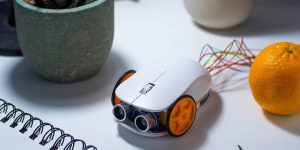
Jerry
Joanne Leung (HK)
A little mouse lives under your nose all the time. Its name is Jerry. He works and he plays. He loves and he hates. The computer mouse is entering his mid-life crisis as the floppy disc did. He evolves and turns his mid-life crisis into ours. This interactive mouse allows audiences to review their sense of control and superiority over other objects through spiritualizing a seemingly unspiritual machine. A story starts from an it and ends with a he.

TIMELESSNESS
Universidade de Lisboa, Faculdade de Belas-Artes
When Ars Electronica completes 40 years, we might be inclined to think that digital art is bound, by technology, to the time of its creation. Experiencing this selection in which drawings are excavated and expanded through augmented reality, however, a viewer’s gaze is allowed to degrade the photographic image, and the tangible or performative gestures of the audience are used to evoke memories or point to new directions. We realize that creativity can definitely transcend the technology used to build it. Calling upon temporality, space, and memory as key ingredients, Timelessness engages the participants on a journey through social, aesthetic, and temporal landscapes. The exhibition gathers artistic projects developed by undergraduate, masters, and doctoral degree students in the scope of the Multimedia Art Department of the Faculdade de Belas-Artes of the Universidade de Lisboa – FBAUL.
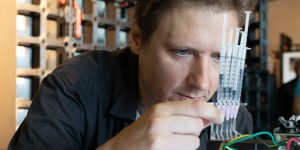
BLP-2000D
BCL – Georg Tremmel (AT), Shiho Fukuhara (JP)
DNA Synthesisers or ‘DNA Printers’ are devices that chemically synthesise or ‘print’ DNA sequences. Currently, the synthesis of long DNA sequences is still an expensive process, therefore DNA Synthesisers are centralised and offered as a service to universities and research institutions. When a specific DNA sequence is ordered, the DNA information is sent to the company, the DNA is synthesised and returned in its physical form, ready to be used for biological experiments. This centralisation also has an intended side-effect: the companies act as censors, controlling which DNA is to be synthesised—and which not. An unofficial ‘Black List’ of potentially harmful and forbidden DNA Sequences has been created and is shared amongst the companies—officially for bio-security reasons. Because of the expensive chemicals involved in the process, it was not really feasible to create a DIY DNA Synthesiser—until now. DIY microfluidics make the process possible and more affordable. But it is still error-prone and creates mutations in the physical DNA sequences. BLP-2000 creates prototype DNA Synthesisers that only print the 'forbidden,' black-listed DNA Sequences. The process of printing black-listed DNA Sequences also creates a moral and societal dilemma.
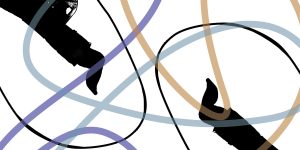
Social Shoes
Jie Liao (CN)
Running has become a new opportunity for communication in people’s leisure time. These social shoes can enhance this connection. When people haven't been running for a long time, the shoes urge them to move. When people put them on, the shoes will start looking for another pair of shoes to encourage people to run together.
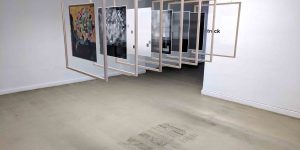
Cat: Collaborating with a Neural Network
Rachel Smith (UK)
This work is a conversation between Rachel Smith (human) and cifar10_cnn.py (artificial neural network). In order to communicate successfully, they must speak the same language. The method of communication is a human/machine compromise; a hand-painted grid of pixels. The human must automate and restrict herself, the network must cope with human error and bodily forms.

post-window
TopLap – Lina Bautista (CO/ES), Ivan Paz (MX/ES)
post-window reflects on the semantic, semiotic and affective bridges connecting our imaginary sonic and written languages. It is conceived as a high-level device for sound live coding that visualizes algorithmic sentiment analysis. It is a window that invites us to find the nonconformity within the limits of the algorithm. The training bias, the implicit values of humans involved in data collection and processing, might never replicate the plasticity of the individual mind.
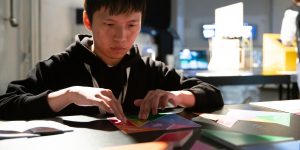
Imagination box
Ke Wang (CN)
This is a web-based collaborative writing group whose stories emerge from the same worldview. The pursuit of imagination is the firm ethic of the SCP, who fear that fiction will lose imagination. My work has designed 5 different types of cards according to the characteristics of the SCP, which players can use to generate different story elements for their work.
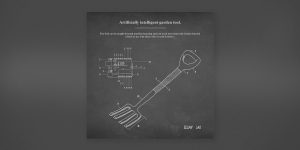
Artificially intelligent garden tool
Jiayin Lao (CN)
This garden tool is a tool designed for the Green Gym, a community space where volunteers garden together weekly. They welcome people who have no basic knowledge about gardening, so the members have to share knowledge during the activities. However, since the members are voluntary, once the members leave the community, they take away their specific knowledge with them.
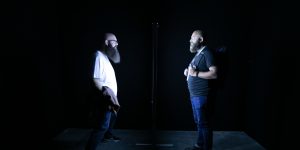
Alter Ego (Version II)
Moritz Wehrmann (DE)
Alter Ego questions the mimetic inter-relationship between two persons. It creates a mental conflict of self-localization, a feeling of self-loss and a feeling of empathy at the same time. The work is foundation for a cooperative with neurophysiological researchers, e.g. with Prof. Alain Berthoz of at Collège de France in Paris. It plays an important role in the research areas of self-other perception and mechanisms of sympathy and empathy research and their disorders, e.g. schizophrenia and autism.
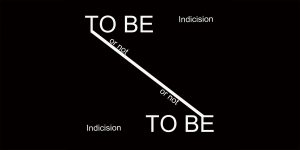
To Be Or Not To Be
Hui Shan (CN)
This project explores our relationship with daily-use AI consumer electronic products. It challenges the design techniques used to make AI products more ‘reliable’ and ‘comfortable’ from the consumer’s point of view. Three AI products have been re-aestheticised from an unheimlich (uncanny) perspective. By making the audience experiment with the ‘Anti-Alexa Experience,’ this project aims to promote socio-technical knowledge and introduce critical thinking towards daily AI products and services.


